Are you wondering do smart plugs save energy? You are in the right place. I have been using smart plugs for quite some time now and have ample knowledge about their power consumption. Here I will answer whether smart plugs save energy, and what will be the costs incurred without using them. Let’s head towards the next section!
Do Smart Plugs Save Energy and How Much Energy Do Smart Plugs Save?
It’s clear that smart plugs save energy because by using them your appliances don’t consume phantom (standby) power. But the question of how much they save and whether they are worthy of investment is also not unimportant.
According to the research conducted by the National Renewable Research Laboratory and CLEAResult, smart plugs can save energy from 1% to 4.58% annually or up to 1000kWh of energy. So smart plugs definitely a worthy investment!
Read Also: Philips WiZ vs Hue: Which Is Better and Offers More Features
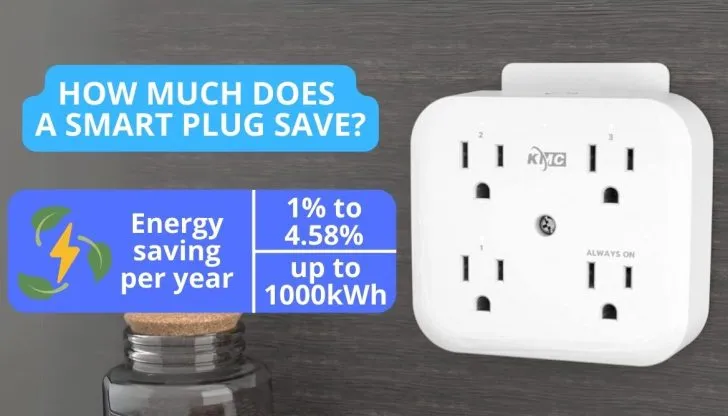
Smart Plugs Monthly Saving on Electricity Bill
Now let’s discuss this in terms of the money. As per the NRRL research, you can save up to 1000 kWh of energy in a year. The average price of electricity is 16 cents per kWh.
So 1000kWh of electricity costs around $160. This means that smart plug save up to $13 a month on energy bills.
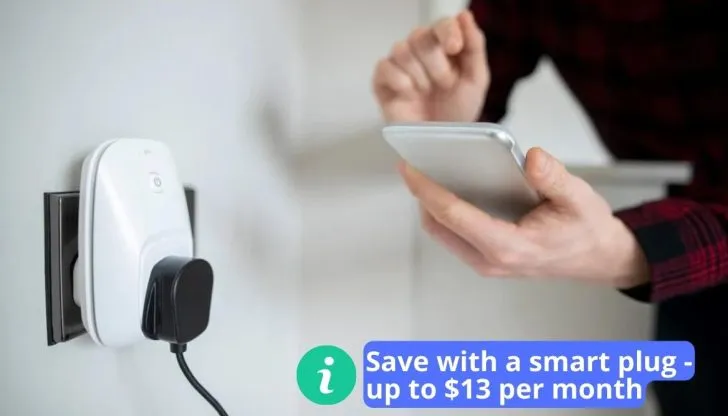
Do Smart Plugs Use Electricity When Off? Smart Plug Energy Usage by Type
To answer quickly, yes smart plugs themselves use electricity, but do not a lot. Let’s take a look at the energy consumption of the smart plug when in standby mode:
Smart Plug Connection Type | Stand-by Power Consumption |
Wi-Fi | 1.0-2.0 Watts |
ZigBee | 0.3-0.6 Watts |
Z-Wave | 0.3-0.5 Watts |
From the above table, it is clear that smart plugs use very little power, and in a month they use approximately only 720 watts which is almost nothing when compared to phantom energy usage. To make it more clear, the average cost of electricity is 16 cents per kWh, so the smart plug will cost you only 11 cents a month.
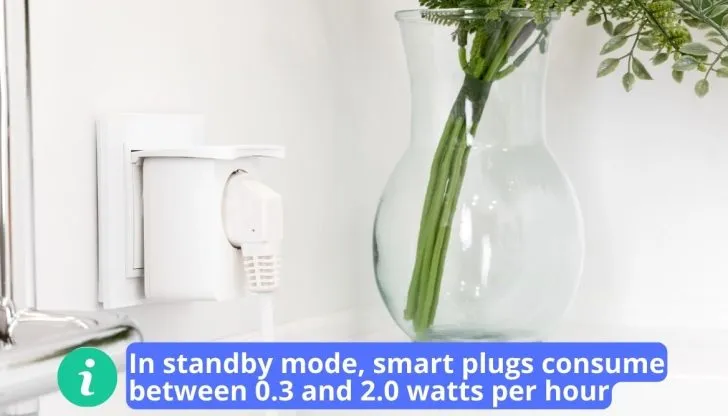
Continue reading to learn about power consumption in detail, a phantom load of home appliances, and the 3 ways how smart plugs save more electricity.
Is Phantom Load a Reality or Myth?
Phantom loads are the electricity a device uses when not in use. These are sometimes referred to as vampire power. According to EnergyStar.gov, most smart home devices like TVs, microwaves, and gaming consoles use electricity even when they are turned off which adds up to the energy bills.
Listed below are some of the appliances with their phantom load for a better understanding:
Appliances | Min. Standby Power(W) | Average Standby Power(W) | Max. Standby Power(W) |
Air Conditioner | 0.58 | 4 | 10 |
Air Purifier | 0.21 | 0.7 | 1.51 |
Charger – Battery | 0.21 | 0.44 | 2.36 |
Computer Desktop | 0 | 2.7 | 15 |
Cooking Range | 0.6 | 3.1 | 6 |
Dehumidifier | 0.45 | 0.45 | 0.45 |
Dishwasher | 1 | 2 | 3 |
Fan | 0 | 0.22 | 0.56 |
Gaming Console | 0 | 1.7 | 24.5 |
Humidifier | 0.41 | 1.2 | 3.5 |
Microwave | 0 | 1.5 | 7 |
Monitor | 0 | 0.6 | 17.8 |
Television | 0 | 0.95 | 23.8 |
Washing Machine | 0.89 | 2.35 | 8 |
Water Heater | 4 | 7.8 | 12 |
From the above table, it is clear that most of the daily use appliances are just wasting energy even when they are not in use. So, Smart plugs offer a solution to minimize this energy waste as they use only a watt when in standby mode.
Breakdown of Energy Consumption and Incurred Costs with and without Smartplug
Let’s break down how much power is wasted during weekdays. For this purpose, I will be breaking down it on my routine and you can calculate it the same way.
I leave for work at 8 in the morning and come back at 6 PM and I go to bed at 10 PM and wake up at 6 AM, so in these hours, the devices are in stand-by mode. This sums up to be total of 18 hours where the devices that are not in use will be drawing power at standby mode.
- From the above table for the phantom load, generally, household devices draw a total power of approximately 127 watts per hour. So I’m away for 18 hours, which means that 2.286kWh of energy is wasted on a daily basis.
- The electricity bill for the phantom load will be 37 cents per day and it will be around $9.6 a month (excluding weekends). For a whole month, this will go as high as up to $13.
- In contrast, the smart plugs will use only 18 to 36 watts of energy daily. So the daily cost of the electricity bill for smart plugs will be only 0.576 cents a day or 17.28 cents a month.
From the above analysis, it is clear that I save around $12.82 per month using smart plugs.
Common Uses to Lower Electricity Consumption with Smart Plugs
Now that you know that smart plugs do not use a whole lot of power, here are some ways to save power by using them. Some ways that will help you lower phantom loads around your house.
1. Light Lamps
One of the best applications of using smart plugs is using them with lamps. You can remotely control their operation and turn them off if you forget to switch them off before leaving the house.

Moreover, you can set a timer for lamps and they will automatically turn on and off at the set timers. Also, if they are connected with a smart plug there is no need to plug out the lamp switch every time to save energy.
2. Game Consoles
Those gaming systems are a big hog when it comes to consuming power even when turned off. The XBOX 360 S uses almost 2 watts in stand-by. Also, consider if these devices are plugged into the same power strip as a TV.
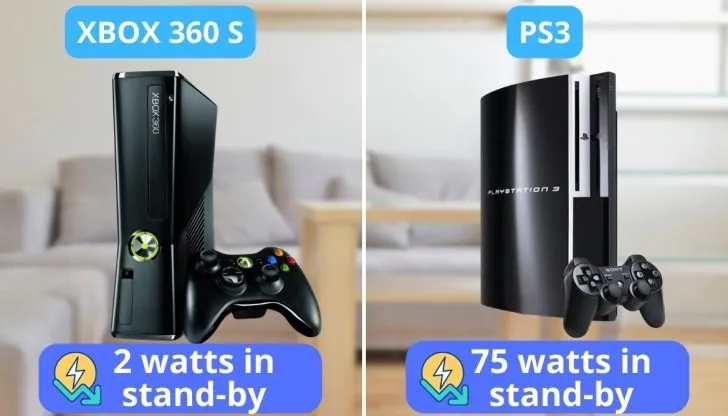
Power usage jumps considerably when the unit is turned on. The PS3 uses 75 watts when turned on and idle. Make sure to only turn game consoles on when you’re using them!
3. TV & Home Entertainment
Modern TVs actually do a good job at regulating standby power, with some models using half a watt or less. However, consider older models, which will probably use more. Also, consider the home entertainment.
Have you ever felt one of those receivers even when it is just sitting there? Those things are always warm when they are on, meaning they’re eating up unnecessary watts
4. Kitchen Countertop Appliances
Kitchen countertop appliances waste the phantom power when they are plugged in and in standby mode. Microwaves use a maximum of 7 watts, coffee makers use 3.26 watts and kettles use 4 watts of maximum energy in standby mode. So it is recommended to use smart plugs with such appliances to save on energy.
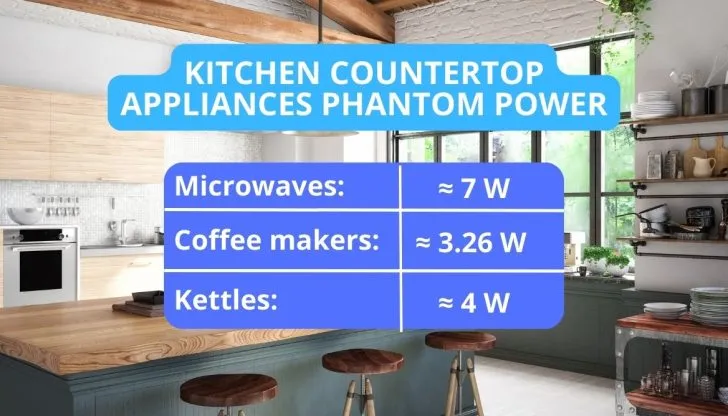
3 Tips for Reducing Hidden Power Consumption
Listed below are some helpful tips to cater to power consumption. Let’s check them out:
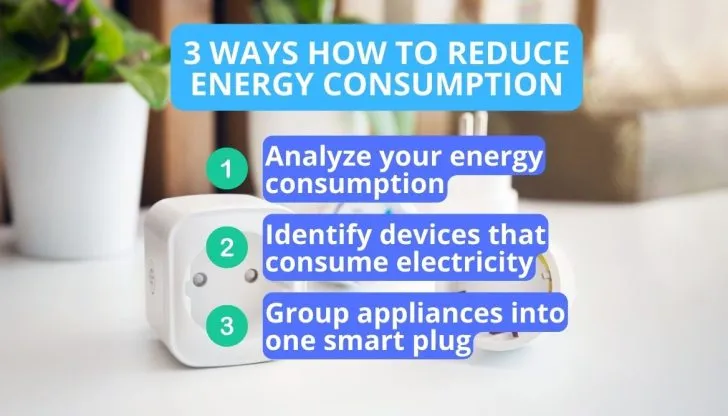
1. Review your Energy Consumption
We live in the modern age. Utility companies are now able to provide hourly data on our home energy consumption. Remember those “Smart Meters” being in the news? This is where they come in handy.
Look at your hourly usage at hours when you are away from home and don’t have anything like a dryer running or the A/C cooling down the house. You will get a pretty good idea of how much energy your home is consuming just by things that are plugged in.
2. Identify Energy Consuming Devices
Take a walk through your house and note everything that is plugged in. You might want to actually write them down. The average household has over 40 devices plugged in? That’s a lot to have on a mental note. Identify which devices are consuming energy when “turned-off”.
If you need help, some smart plugs have a feature that measures the energy consumption of the device plugged into it. Alternatively, there is a popular device called the Kill-O-Watt. This device plugs into the wall, and then the device you want to measure plugs into the Kill-O-Watt.
3. Group Devices onto One Smart Plug
If reducing energy consumption by using a smart plug is your goal, this is the key right here. Modern devices do a great job of using little phantom power. Everyone wants to have that Energy Star rating so they can potentially sell more products.
The problem is that we have so many devices plugged in around the house. If you can group those items to a power strip, and plug that into a smart plug, you can save power.
- The TV and all its gadgets are a good place to start.
- Next, there is the home office, with the printer, chargers, computer, and more.
- You probably want to keep your modem and router powered separately, so you can actually control your smart devices, including the smart plugs.
As a result, you’ll save money on your monthly bills.
Lower Your Load During Peak Hours
One of the major impacts on electricity bills is using the extra devices during peak hours. During peak hours the rate of electricity is a bit higher than the usual rates, you can look for the peak hours rates on the official website of the energy company that is providing you with electricity.
To save on your electricity bill, I would recommend you use high-energy consumption devices like your dishwasher, and washing machine during off-peak hours.
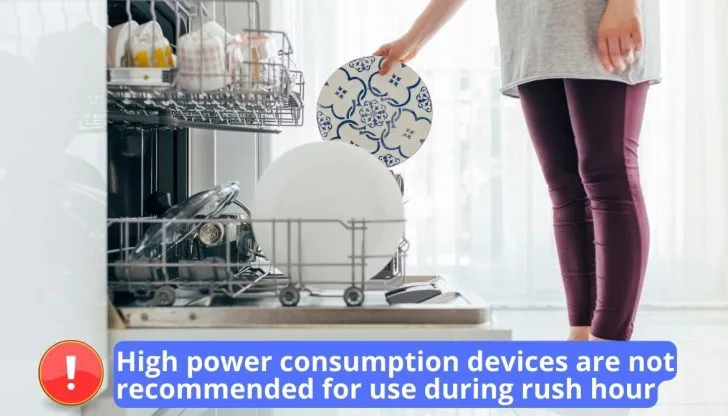
Using Timer Settings to Save Energy
Use the timer settings in smart plugs to get the most out of it. You can set the timer for different appliances like lights, dishwasher, and washing machine to automatically turn them on or off at the desired time.
For example, I use my dishwasher with a schedule mode while I’m sleeping and during off-peak hours to save on the electricity bill.
How To Choose The Right Smart Plug?
Until now, we have learned that yes smart plugs do save energy. For this purpose, it is important to choose the one that meets your needs, Following are the parameters you should check for before getting the smart plug:

1. Compatibility with Assistants
Compatibility with the smart home assistant is a crucial factor. Opt for the smart plug that can be connected with either Alexa or Apple kit, whatever suits you best. Also, go for a device that offers multiple assistant connectivity so you can operate them with any of the platforms.
With the voice assistant features, you can operate your appliance with your command and without needing your smartphone. For example, while I’m watching a soccer match, I use Alexa to turn off or on the lights with just my voice commands and take my comfort level to the next zone.
2. Schedule Capabilities
With timer settings, you can remotely access your smart plug and set the time fixtures for turning on and off for the appliances. Like during hot summers, you can turn on your AC a few minutes before you get into the house to get a cooled environment.
3. Away Mode
A very useful function when it comes to the safety of your property. With the help of away mode, you can keep turning on and off your lights while you are not at home to keep the burglars away.
4. Design
Another key factor to keep in mind is the dimension and size of the smart plug. You need to ensure whether the device will fit into your pocket or not and whether it adds value to decor.
Lastly, I recommend the one I am using, the KASA smart plug mini, which supports Alexa, Google, and Apple Homekit. It can monitor the energy consumption and also can be controlled remotely. In short, I couldn’t ask for a better device.
Frequently Asked Questions
Do smart plugs constantly use electricity?
Yes, the smart plugs constantly use the electricity. They only use up to 1 watt of energy which is only 720 watts a month which is negligible compared to phantom or vampire power.
Do smart plugs help save electricity?
Yes, Smart plugs help to save electricity. It can save up to 1000 kWh of energy annually which costs around $160.
What are the disadvantages of smart plugs?
The disadvantage of smart plugs is sometimes you might experience delays or glitches. Also, some smart plugs don’t support the high-wattage devices.
Do Smart Plugs Save Money?
Yes, Smart plugs do have the potential to save you money if used correctly. According to research from the National Renewable Energy Laboratory, smart plugs can result in energy savings of up to 4.58%. Saving energy directly results in saving money.
Do Smart Plugs Use Energy When Off?
Yes, Smart plugs consume about 1 watts when turned off and in standby mode. Wi-Fi Smart Plugs consume 1-2 watts. ZigBee Smart Plugs consume between .3 – .6 Watts. Z-Wave Smart Plugs consume about .4 Watts when idle.
Conclusion
Let’s revise, Do smart plugs save energy? Yes, they are energy-efficient devices as they only use 720 watts a month. In contrast, the phantom load uses approximately 2.286 kWh which is much more energy compared to them.
Smart plugs are a valuable addition to your home which offer both savings on electricity bills and add convenience with features like timer settings and voice assistant. Also, you can monitor your energy consumption, keep tabs on the high energy consumption devices, and control their usage in peak hours.
Recommended read:
